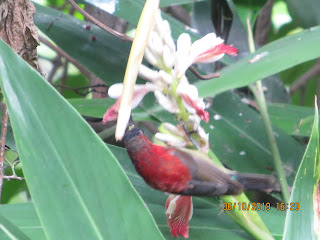The crescendo call of Kuooo- Kuoo- Kuoo may be what some of us wake up to on most or some days. As a child, I had always heard its call but had never actually seen one. So when my interest in birding began to grow, I always thought someday I maybe able to follow its call and see what it looks like. The first time I saw it, I thought is was a crow. It took a photograph to reveal the visible differences more clearly.
This here is the male Koel.
You can see them singly or in pairs, sitting in the groves of trees.
Koels are found in the entire Indian Union, Bangladesh, Pakistan and Burma.
They are arboreals who frequent gardens and open country abounding in large leafy trees.
Below is the image of a female koel. The female is brown and spotted.
They are silent in winters but become increasingly noisy in hot weather.
Food is largely fruits and berries; also caterpillars and insects.
Nesting Season: mainly April to August similar coincidentally with crows.
They are a genus of Cuckoos and lay their eggs in the nests of other species, who raise their young.
The bird is widely used in Indian poetry and by writers in songs. So, I was thrilled when I could click them.
Here are some of my photos of the male and the female koel:




















